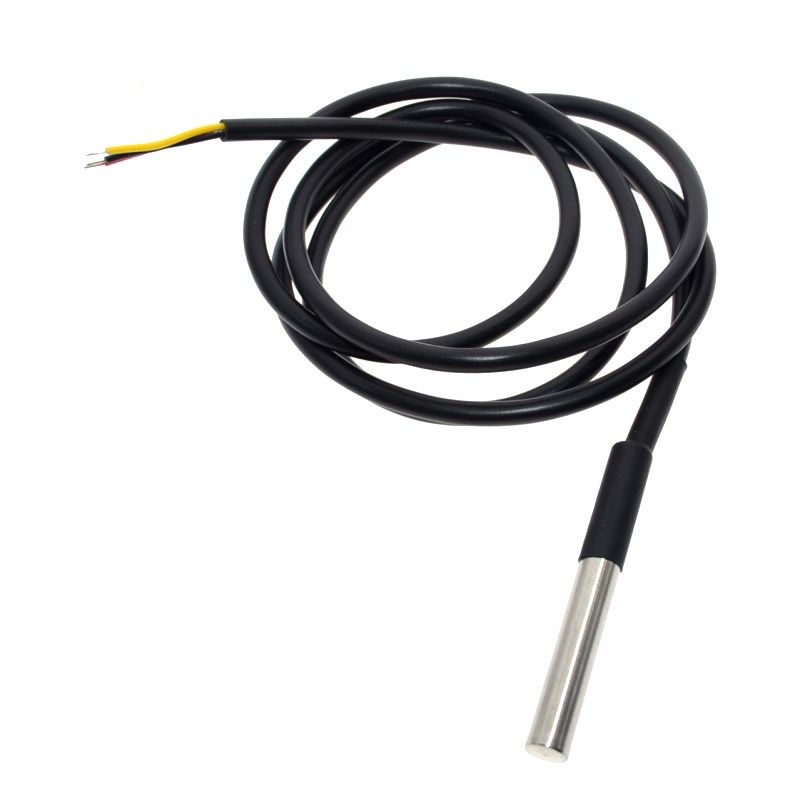NOAA (including legend Jim Hendee) have developed some new low cost temperature loggers - $9 for parts, pretty good! See the Opuhala project page for more or paper with details on construction. Anybody involved in the trial on here? Anyone who is interested in trying them?
26 October 2020 8:22am
Neat. I think I know an organisation that will be interested in them, though would need to add a light sensor to the board as well, which wouldn't be hard at all. Neither would the IR comms... Will contact the organisation and see what they say.
29 October 2020 1:59pm
hi Andy,
This looks very interesting! I've been working with (or at?) temperature loggers for a while, and the interchangeable thermistor idea here is the most promising where accuracy at low cost is concerned. It's important to note it is the accuracy of the thermistor that is 0.05 degC; the accuracy overall of the logger is going to be less. I've not been able to find more technical details such as part numbers or schematics, so it's hard to get a handle on that. Concerning cost, I do know however that similar thermistors run on the order of $10 in onesies, which makes me think the $9 BOM cost is attainable at qty 1k or 10k.
Thanks,
-harold
1 November 2020 2:55am
Oh, that looks like such an interesting project. I like that the cratering of hardware costs is enabling projects like this to happen. I have some comments on the build which are definitely not a criticism since I love seeing applications of technology that serve an actually useful purpose.
If the goal of the hardware is to measure temperature at a low price point, I would offer some suggestions on possible ways to bring the price down or improve the design while bringing down the cost:
- Instead of a preform PET tube, it might be an idea to use old PET drink bottles. The preform bottles would either need to be included with the design kit or be found easily by anyone wanting to test out the design. This would mean manufacturing your own tubes and caps which would be a pain. Instead, I would recommend using empty PET drink bottles. These could likely be hardened to be watertight to X meters and would both repurpose the plastic for something useful and remove the need to manufacture custom plastic. PET drink bottles are usually specified to withstand fairly high pressures due to holding carbonated drinks and are definitely waterproof. @htarold would actually be the expert on the feasibility of this approach.
- Re-design the board to integrate everything. [Note: I realize it might be difficult to do these changes, so if you're in contact with the people on this project, I'm okay to advise or contribute time to help implement them] In re-designing the board, you could create a form factor that fits into the above-mentioned PET bottles saving on those as a system cost. It's also possible to custom design the power supply to optimize the power and maintain stability. The board being used is designed to run at 5V, but you can actually run that microcontroller down to1.8V reducing the power by a factor of almost 10 (power consumption is proportional to voltage^2). It might also be worthwhile to consider using a precision voltage reference rather than the power supply as voltage reference. Even if you have a precision sensor, if your voltage reference isn't at least as precise, that would introduce uncertainty. I believe @htarold was referring to this in the above post. And finally you can integrate the sensor and all associated components onto a single board saving the cost and labor of the prototyping perfboard needed underneath the Nano.
- From the pictures in the paper, it looks like the sensor is located inside the plastic tube. If that's the case, what it's sensing is the air inside the tube, and the unspoken assumption is that the ocean temperature will reach equilibrium with the tube walls which will reach equilibrium with the air temperature so the sensor will reflect the ocean temperature. I think it's a valid assumption, but air, especially non-moving air, is a poor thermal conductor so it would take a long time to detect changes in ocean temperature. One possible idea would be to use a sensor that is actually directly inserted into the water. This would sample the actual ocean temperature in real time and would respond more quickly to any changes, ie: if the temperature changes at night vs day, etc. Thermistors can actually be purchased encased in stainless steel tubes. Or for a specialty precision thermistor like this, it's also possible to purchase a stainless steel temperature sensor tube housing and manually insert the sensor. An image of an encased thermistor is below.
- It might be possible to provide the components in kit form and lightly disguised as a soldering learning kit as well. That way, it's possible to have "soldering workshops" where people learn how to solder by assembling these kits. Attendees learn a new skill while protecting the environment, the orgs get temperature dataloggers, save the cost of assembly, and perhaps even make a bit of money for soda and chips if attendees pay to learn how to solder :)
If the Opuhala project wants, we can help procure components wholesale through our purchasers.
Anyways, it sounds like a great project, if they need any advice or help, we're happy to contribute to improve reef health.
Akiba, FreakLabs

2 November 2020 12:34am
Hi Akiba,
I made a mistake, I did manage to find some +/-0.05 degC thermistors for USD4 on Digikey, so the USD9 figure can be feasible in low quantitites. I actually bought a bunch of the thermistors you linked to; the part variation is quite high so calibration is needed to get good results. I think this is one area where we can truly say Cheap, Accurate, Simple: pick 2. Edward Mallon whom the authors also cite https://thecavepearlproject.org/ has blogged extensively on this.
Personally I would try to avoid analoque devices because I don't want to deal with having to amplify it, which is where the errors creep in. Maxim make an ADC that directly compares resistance ratios, and HX711 simplifies bridge measurements. I'm not sure how this logger does it; the Arduino's ADC isn't very good as you said. The MAX30205 human body temperature sensor may be worth looking in to for this application. The measurement range is small but probably adequate for this application, and the accuracy is well documented.
The sensor time constant is a bit high but should be ok for for this low-rate application, and kudos to the authors for characterising it. There are applications where the time constant needs to be <1s, like for ocean turbulence structure measurement, but that is more physical oceanography and only indirectly wildlife conservation. The internal sensor simplifies the logger and this is a big advantage in this instance, one I have taken advantage of in the past.
I have considered PET bottles in the past and it is very attractive. They do very well with internal pressure (7 bar I think!) but with external pressure they are prone to buckling. One approach may be to re-mould the bottle to be smaller so the walls are thicker. This should be easy because the bottle shrinks with the application of heat anyway.
I like cheap hardware too! Plus it goes well with citizen science in a field where investigation is labour intensive and it lends itself well to outreach efforts.











Jack